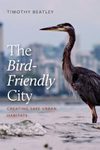By: William W Braham(Editor), Daniel Willis(Editor)
208 pages, 69 b/w illustrations
![Architecture and Energy Architecture and Energy]()
Click to have a closer look
About this book
Contents
Customer reviews
Biography
Related titles
About this book
Does energy consumption influence architectural style? Should more energy-efficient buildings look different? Can that "look" be used to explain or enhance their performance? Architecture and Energy provides architects and architectural theorists with more durable arguments for environmental design decisions, arguments addressing three different scales or aspects of contemporary construction. By drawing together essays from the leading experts in the field, Architecture and Energy engages with crucial issues in sustainable design, such as:
- The larger role of energy in forming the cultural and economic systems in which architecture is conceived, constructed, and evaluated
- The different measures and meanings of energy "performance" and how those measures are realized in buildings
- The specific ways in which energy use translates into the visible aspects of architectural style.
Drawing on research from the UK, US, Europe, and Asia Architecture and Energy outlines the problems surrounding energy and architecture and provides the reader with a considered overview of this important topic.
Contents
Introduction: Architecture and Energy (Again) (William W. Braham & Dan Willis)
Part 1: Energy Systems
1. Architecture, Style, and Power: the Work of Civilization (William W. Braham)
3. Architecture and Life (Luis Fernández-Galiano)
4. Energy and the Social Hierarchy of Households (and Buildings) (Thomas Abel)
5. Design in the Light of Dark Energy (John Thackara)
Part 2: Building Performance
6. Less is Less: Are Architects Thinking Too Small? (Daniel E. Willis)
7. Environmental Surfing - Delight and Nature's Renewable Energies (Vivian Loftness)
8. Adaptive Architecture (Simos Yannas)
9. Designing for Low-Energy: Seeking Representations of High-Performance Homes in Post-War America (Franca Trubiano)
Part 3: Architectural Aspects
10. Technics and Poetics of the Architectural Environment (Dean Hawkes)
11. The Formations of Energy in Architecture (Kiel Moe)
12. Visualizing Renewable Resources (Daniel Barber)
Customer Reviews
Biography
William W. Braham is Associate Professor of Architecture at the University of Pennsylvania, where he is currently Director of the Master of Environmental Building Design.
Daniel Willis is Professor of Architecture at Pennsylvania State University, where he is Interim Director of The Institute for the Arts and Humanities and a founder of the Center for Research on Design and Innovation.
By: William W Braham(Editor), Daniel Willis(Editor)
208 pages, 69 b/w illustrations



































